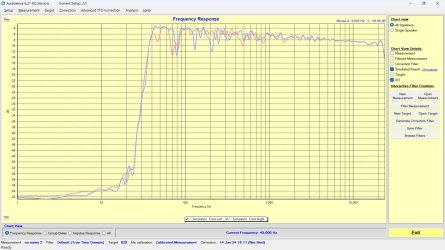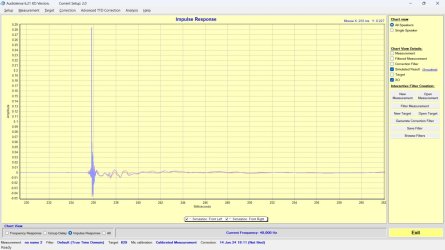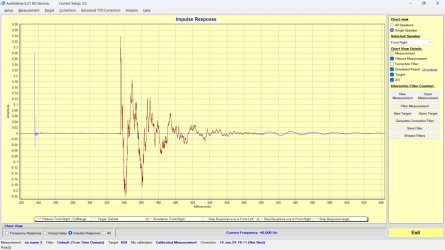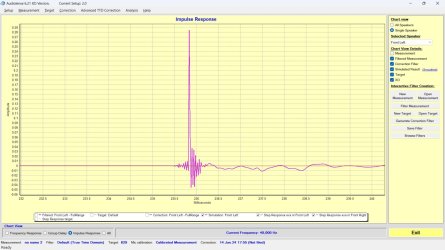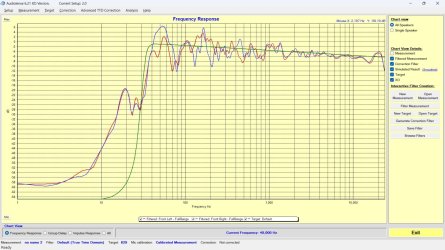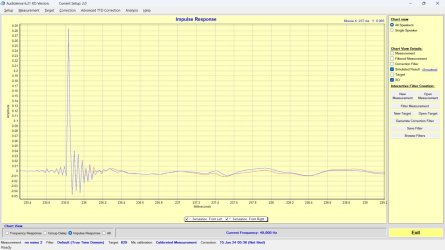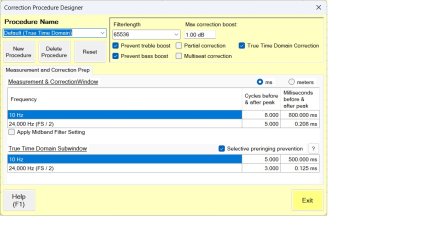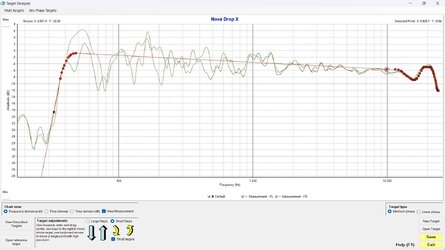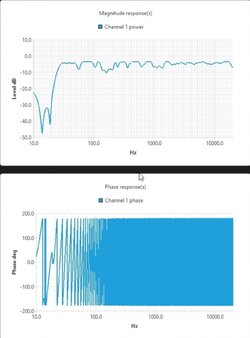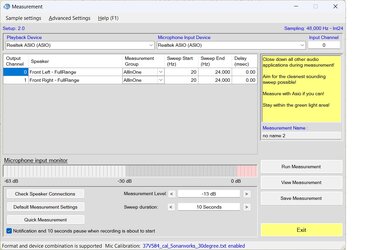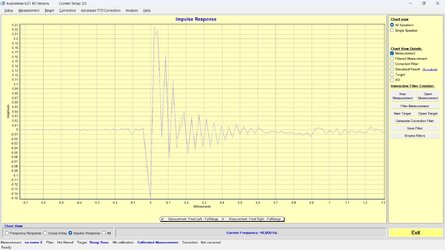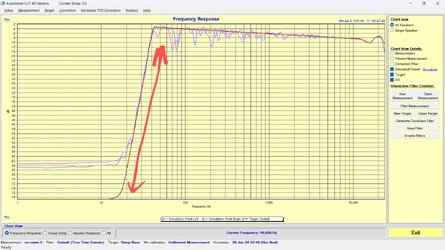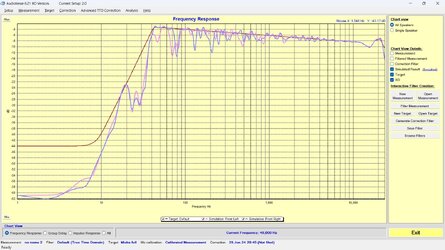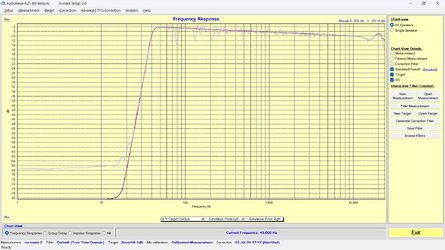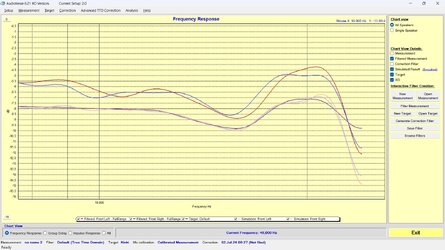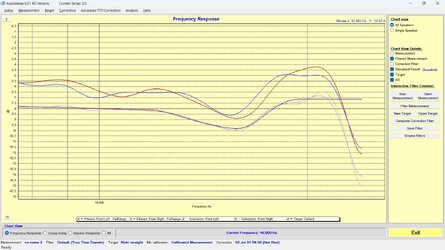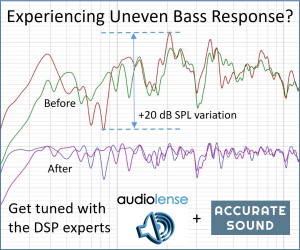- Joined
- Feb 5, 2018
- Posts
- 803
Step response simulation,
Simulated frequency response (the easy part to get right, technically, but not always sonically) - very important to the perceived sound quality.
Simulated step step response. Ideally we want a clean entrance and a pure wave that fades out in the exit.
And finally a close examination of the correction impulses. What we’re typically looking for here is excessive correction. But it will also often reveal if something has gone wrong.
Simulated frequency response (the easy part to get right, technically, but not always sonically) - very important to the perceived sound quality.
Simulated step step response. Ideally we want a clean entrance and a pure wave that fades out in the exit.
And finally a close examination of the correction impulses. What we’re typically looking for here is excessive correction. But it will also often reveal if something has gone wrong.








